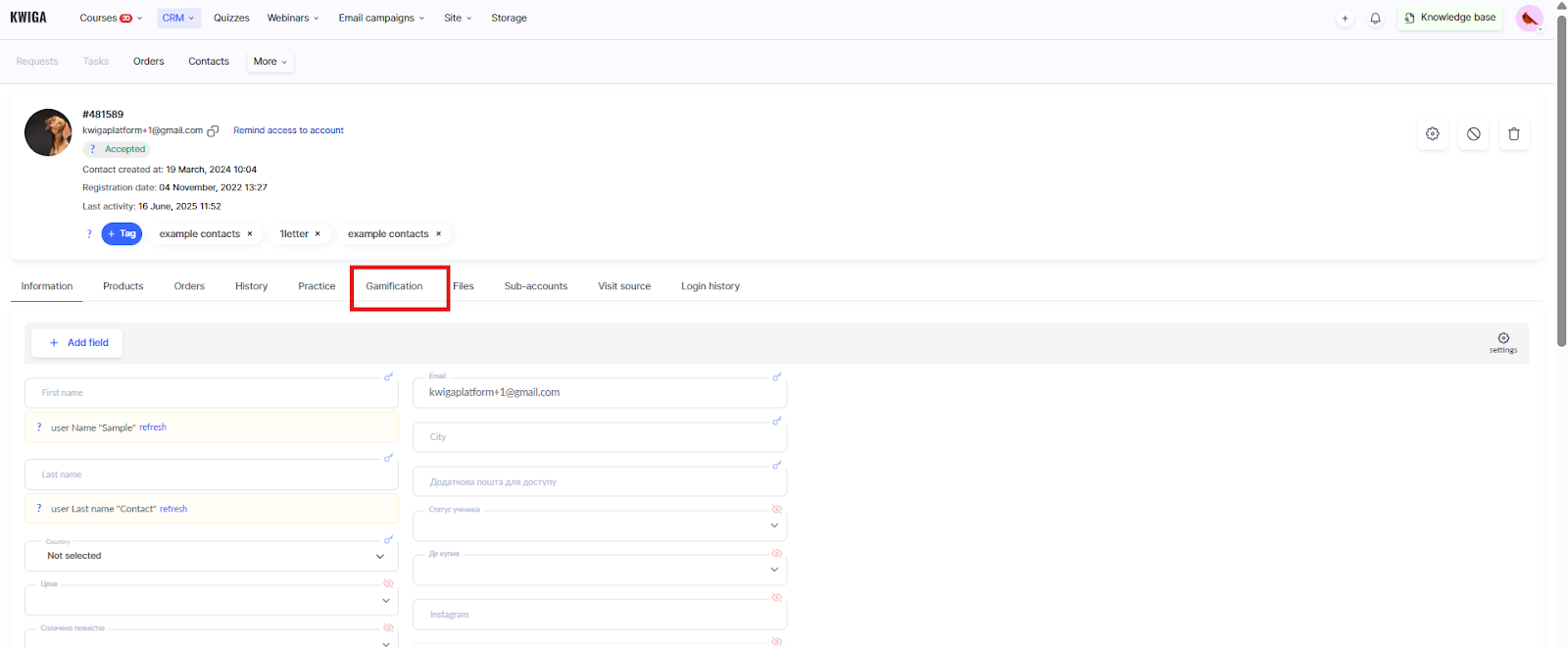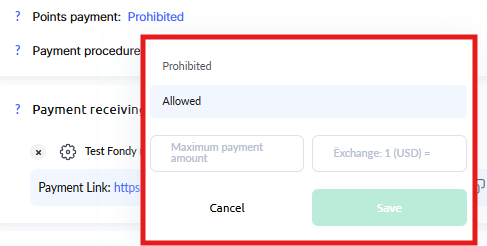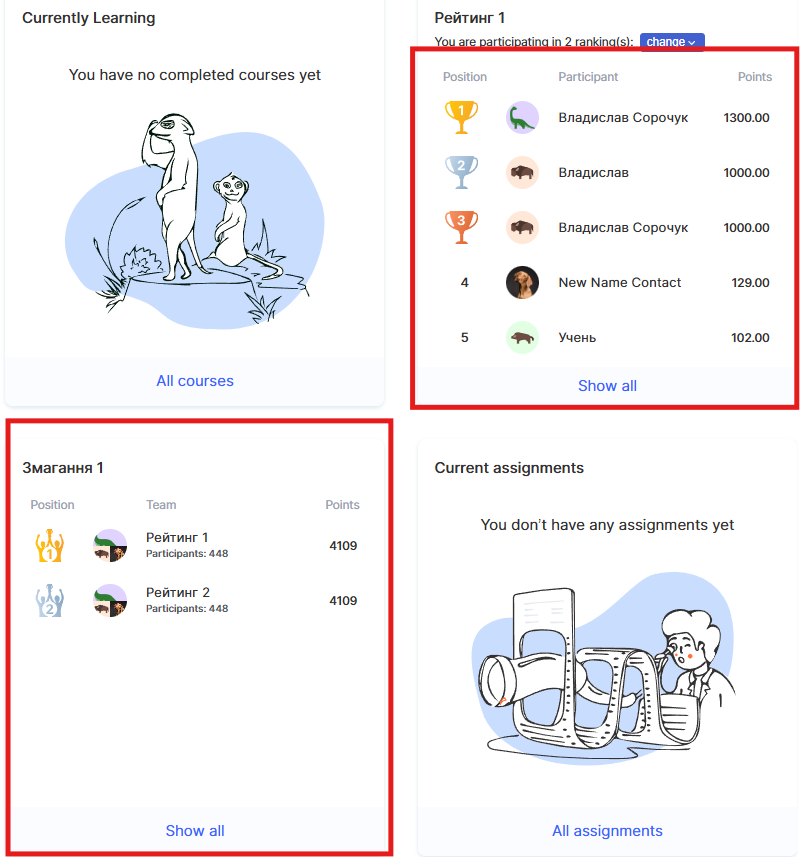Articles:
Overview of gamification tools in online learning: from scoring and status creation to organizing competitions and reward systems for effective participant motivation.
In this article:
Gamification is one of the tools for transforming the learning process. A properly configured system of points, statuses, ratings, and awards creates a motivating environment where students are actively involved in learning and strive to achieve better results.
A comprehensive approach to gamification can enable you to:
-
increase student engagement in the learning process
-
create additional motivation for regular learning
-
develop healthy competition between participants
-
ensure recognition of each student's achievements
-
form a community of like-minded people through team competitions
The use of different gamification elements in combination creates a multi-layered motivation system that works for students with different needs and learning styles. Some are motivated by individual achievements and status, others by teamwork and competition, and still others by the opportunity to spend their earned points on additional benefits.
Tip: Successful implementation of gamification requires a careful balance between the different elements of the system and regular monitoring of its effectiveness. It is important to remember that gamification should complement quality content, not replace it.
The platform implements a comprehensive system of points, statuses, ratings, and awards that encourages students to actively participate in learning. Thanks to these mechanisms, students see the concrete results of their efforts and have additional motivation to continue learning.
Calculating points and displaying points in the student's profile
Basic points are awarded for completing practical tasks. The platform automatically awards points to students after they successfully complete tests, practical exercises, and other assessed tasks. For example, we have described how to create and configure auto-checking and grading in the instructions for creating tests with grading.
Additional scoring options are implemented through the automation system, which allows you to award points for various events and conditions within the course, such as viewing lessons or other participant actions.
And in the contact card on the Gamification tab, the expert can manually award or deduct points from an individual participant. This is useful for encouraging particularly active students or adjusting the balance in special cases.

Using points to purchase other offers
More details on creating offers are described in a separate article, please pay attention to the Cost - Payment with points section.
Earned points can be spent as the platform's internal currency. In the offer settings, there is an option to allow payment with points (partially or fully, at your own rate). For example, an additional course costing 500 hryvnia or dollars can be paid for and sold for 1000 points, or mixed payment can be allowed — 300 hryvnia + 200 points.

Gamification: participant statuses
When students see their progress in the form of points and statuses, they naturally strive to improve their results. This creates additional motivation for regular learning and active participation in the course.

The status system works as a hierarchy of achievements, for example: a student can start as a Beginner (0-100 points), then become a Learner (101-500 points), then an Expert (501-1000 points), and finally a Master (over 1000 points), and so on.
Properly configured statuses encourage students to actively learn and allow you to recognize participants' achievements, motivating them to further develop.

Detailed information about configuring statuses can be found in a separate article.
Gamification: ratings, competitions
The rating system allows you to create a competitive spirit among participants and increase their activity. For example, the top 10 students of the month can receive special awards or mentions in the newsletter.
While individual ratings create competition between individual participants, team competitions add a whole new level of interaction. They bring people together in groups, creating a sense of shared purpose and responsibility to one another. Team members can support each other, share advice, and work together to achieve a common goal.
The platform also supports the creation of competitions between teams, adding an extra level of competition. To hold a competition between teams, you need to create at least 2 rankings (teams). For example, you can organize a monthly competition between teams from the same stream.

For more information on setting up ratings, see a separate article.
Gamification: awards, badges
The Kwiga platform offers flexible functionality for creating a personalized reward system that allows you to combine automatic awarding with an individual approach to each participant. Thanks to detailed settings, you can create a unique motivation system that will suit the specifics of your course and the needs of your audience.
You can set specific criteria according to which the platform will automatically award participants. Each award can have its own design, description, and conditions for issuance.
Detailed information about award settings is described in a separate article.
Displaying gamification elements in the participant's profile
The number of points earned is displayed at the top right next to the profile avatar. Clicking on them will take you to the Points menu, where, in addition to the available points and their history, the status and awards (if activated in the project) can be displayed.

Data on gamification and student achievements can also be found in the Dashboard menu. Here you can see a visual representation of status, ratings, competitions, achievements, and more. This allows participants to quickly assess their progress, compare results with other students, and see which awards they have already received and which ones they can still earn.

The convenient location of gamification elements in the interface ensures that students can always see their progress, which further motivates them to actively participate in the learning process.
Didn't find the answer? Contact the support service via online chat or Telegram
